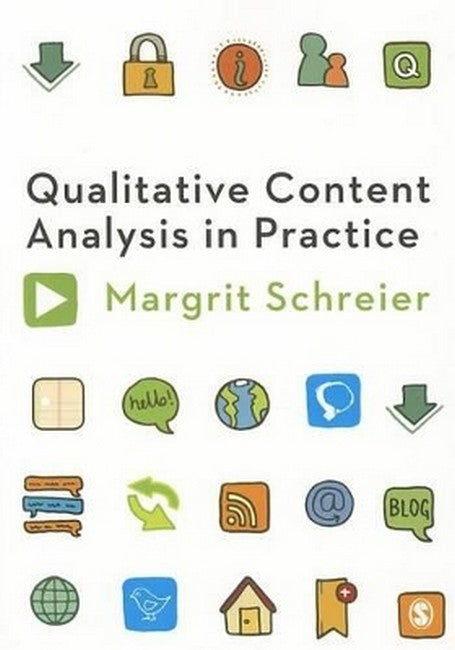Margrit Schreier has been a professor of empirical research methods at Jacobs University, Bremen, Germany, since 2003 (BA/MA English Literature, Oxford; Diploma Psychology and PhD Psychology, Heidelberg University; Habilitation Psychology, University of Cologne). Her research interests include qualitative research methods and methodology, mixed methods, media psychology, empirical study of literature, and health research. She has been a principal investigator in several DFG-funded research projects on these topics, and she has authored and coauthored more than 90 book chapters and articles. She is coeditor of the issue "Qualitative and quantitative research: Conjunctions and divergences" of Forum: Qualitative Social Research (2001; with Nigel Fielding), coauthor of Forschungsmethoden in Psychologie und Sozialwissenschaften fuer Bachelor ([Research methods for psychology and the social sciences] with Walter Hussy and Gerald Echterhoff), and author of Qualitative Content Analysis in Practice (2012; SAGE).
Request Academic Copy
Please copy the ISBN for submitting review copy form
Description
Introduction: What Is Qualitative Content Analysis? What Is Qualitative about Qualitative Content Analysis? Will Qualitative Content Analysis Work for Me? Decision Aids The Coding Frame Building a Coding Frame Strategies for Building a Data-Driven Coding Frame Segmentation and Units of Coding Trying It Out: The Pilot Phase What to Keep in Mind: Evaluating Your Coding Frame The Main Analysis Phase How to Present Your Results Using Software in Doing Qualitative Content Analysis
This book provides a well written, clear and detailed account of QCA, highlighting the value of this research method for the analysis of social, political and psychological phenomena Tereza Capelos University of Surrey Schreier writes clearly and with authority, positioning QCA in relation to other qualitative research methods and emphasising the hands-on aspects of the analysis process. She offers numerous illuminating examples and helpful pedagogical tools for the reader. This book will thus be most welcomed by students at different levels as well as by researchers. Ulla Haellgren Graneheim Umea University, Sweden This book has been written for students but would be of value to anyone considering using the analysis method to help them reduce and make sense of a large volume of textual data. [...]The content is detailed and presented in text-book style with key points, definitions and beginners' mistakes scattered throughout and frequently asked questions and end of chapter questions. These break up the text but also help when skimming. In addition, and what I found particularly valuable, was the liberal use of examples drawn from published papers. These really help to clarify and bring to life the issues raised. -- Nicola Singleton Schreier provides several helpful educational tools, such as mid-chapter definitions, summaries and key-points....this is an excellent introductory or reference book for all students of content analysis -- Seth Fallik & JulhiAnn Francis

